Comparison on Impact Toughness of High-Strength Metastable β Titanium Alloy with Bimodal and Lamellar Microstructures
Abstract
:1. Introduction
2. Experimental Procedure
2.1. Material Preparation
2.2. Uniaxial Tensile and Charpy Impact Tests
2.3. Microstructure Characterization
3. Results
3.1. Initial Microstruture
3.2. Uniaxial Tensile Properties
3.3. Charpy Impact Properties
4. Discussion
4.1. Deformation Behavior under Impact
4.2. Crack Propagation under Impact
5. Conclusions
- In the process of tensile deformation, for the alloy with BM, the inhomogeneous deformation between the αp phases and βt matrix, the uniform precipitation of the αs phases on the βt matrix and the high-density dislocation pileup at the interface all contribute to the improvement of strength, while for the alloy with LM, due to the satisfaction of the BOR relationship between αl phase and βt matrix, the slip transfer promotes the increase of effective slip length, which is not conducive to the improvement of strength.
- In the process of impact crack initiation, the crack initiation energy of the BM is lower than that of the LM. In the BM, the severe inhomogeneous deformation and the stress gradient among the αp phases, αs phases and βt matrix make the interfaces where a crack easily initiates while in the LM, the coordinated deformation of the αl phases and βt matrix, the rotation and kinking of the αl phases, the occurrence of deformation twinning and the slip transfer at interfaces together reduce the crack initiation tendency and consume more energy.
- In the process of the impact crack propagation, the crack propagation energy of the BM is lower than that of the LM. In the BM, the crack propagates along the interface of the α and β phases, and the fine αs phase cannot effectively deflect the crack propagation path, so the relatively straight propagation path and low energy consumption are not conducive to the improvement of impact toughness; however, in the LM, the deformation twins, shear band and secondary crack in the lamella effectively deflect and extend the propagation path and increase the energy consumption, resulting in the intergranular and transgranular mixed propagation.
Author Contributions
Funding
Data Availability Statement
Conflicts of Interest
References
- Banerjee, D.; Williams, J.C. Perspectives on titanium science and technology. Acta Mater. 2013, 61, 844–879. [Google Scholar] [CrossRef]
- Boyer, R.R. An overview on the use of titanium in the aerospace industry. Mater. Sci. Eng. A 1996, 213, 103–114. [Google Scholar] [CrossRef]
- Boyer, R.R. Attributes, Characteristics, and applications of titanium and its alloy. JOM 2010, 62, 21–24. [Google Scholar] [CrossRef]
- Ahmed, M.; Savvakin, D.G.; Ivasishin, O.M.; Pereloma, E.V. The effect of ageing on microstructure and mechanical properties of powder Ti–5Al–5Mo–5V–1Cr–1Fe alloy. Mater. Sci. Eng. A 2014, 605, 89–97. [Google Scholar] [CrossRef] [Green Version]
- Wang, H.; Xin, S.; Zhao, Y.; Zhou, W.; Zeng, W. Plane strain fracture behavior of a new high strength Ti–5Al–3Mo–3V–2Zr–2Cr–1Nb–1Fe alloy during heat treatment. Mater. Sci. Eng. A 2020, 797, 140080. [Google Scholar] [CrossRef]
- Sadeghpour, S.; Abbasi, S.M.; Morakabati, M.; Karjalainen, L.P. Effect of dislocation channeling and kink band formation on enhanced tensile properties of a new beta Ti alloy. J. Alloy Compd. 2019, 808, 151741. [Google Scholar] [CrossRef]
- Gao, J.; Huang, Y.; Guan, D.; Knowles, A.J.; Ma, L.; Dye, D.; Rainforth, W.M. Deformation mechanisms in a metastable beta titanium twinning induced plasticity alloy with high yield strength and high strain hardening rate. Acta Mater. 2018, 152, 301–314. [Google Scholar] [CrossRef]
- Zhu, X.; Fan, Q.; Gong, H.; Ying, J.; Yu, H.; Cheng, X.; Yang, L.; Yang, L.; Li, N.; Li, J. Achieving super-high strength and acceptable plasticity for a near β-type Ti-4.5Mo-5.1Al-1.8Zr-1.1Sn-2.5Cr-2.9Zn alloy through manipulating hierarchical microstructure. Mater. Sci. Eng. A 2021, 825, 141907. [Google Scholar] [CrossRef]
- Zhao, G.H.; Ketov, S.V.; Jiang, J.; Mao, H.; Borgenstam, A.; Louzguine-Luzgin, D.V. New beta-type Ti-Fe-Sn-Nb alloys with superior mechanical strength. Mater. Sci. Eng. A 2017, 705, 348–351. [Google Scholar] [CrossRef]
- Duan, Q.Q.; Qu, R.T.; Zhang, P.; Zhang, Z.J.; Zhang, Z.F. Intrinsic impact toughness of relatively high strength alloys. Acta Mater. 2018, 142, 226–235. [Google Scholar] [CrossRef]
- Keshavarz, M.K.; Sikan, F.; Boutet, C.E.; Milligan, J.; Bois-Brochu, A.; Brochu, M. Impact properties of half stress-relieved and hot isostatic pressed Ti–6Al–4V components fabricated by laser powder bed fusion. Mater. Sci. Eng. A 2019, 760, 481–488. [Google Scholar] [CrossRef]
- Huang, S.; Zhao, Q.; Lin, C.; Wu, C.; Zhao, Y.; Jia, W.; Mao, C. Effects of oxygen content on Charpy impact properties and crack resistance of α titanium alloys. Mater. Sci. Eng. A 2021, 818, 141394. [Google Scholar] [CrossRef]
- Buirette, C.; Huez, J.; Gey, N.; Vassel, A.; Andrieu, E. Study of crack propagation mechanisms during Charpy impact toughness tests on both equiaxed and lamellar microstructures of Ti–6Al–4V titanium alloy. Mater. Sci. Eng. A 2014, 618, 546–557. [Google Scholar] [CrossRef] [Green Version]
- Chi, G.; Yi, D.; Jiang, B.; Yang, L.; Liu, H. Crack propagation during Charpy impact toughness testing of Ti−Al−V−Mo−Zr alloy tubes containing equiaxed and lamellar microstructures. J. Alloy Compd. 2021, 852, 156581. [Google Scholar] [CrossRef]
- Lei, L.; Zhao, Q.; Zhao, Y.; Huang, S.; Wu, C.; Jia, W.; Zeng, W. Study on the intrinsic factors determining impact toughness of TC21 alloy. Mater. Charact. 2021, 177, 111164. [Google Scholar] [CrossRef]
- Xu, J.; Zeng, W.; Zhao, Y.; Jia, Z. Effect of microstructure evolution of the lamellar alpha on impact toughness in a two-phase titanium alloy. Mater. Sci. Eng. A 2016, 676, 434–440. [Google Scholar] [CrossRef]
- Yang, R.; Zhao, F.; Liu, Y.; Shi, K.; Yin, S. Effects of thermomechanical treatment on the evolution pattern of the α phase and mechanical properties of Ti-17 alloy. Mater Today Commun. 2022, 30, 103041. [Google Scholar] [CrossRef]
- Yao, K.; Min, X.; Emura, S.; Meng, F.; Ji, X.; Tsuchiya, K. Enhancement of impact toughness of β-type Ti–Mo alloy by {332}<113> twinning. J. Mater Sci. 2019, 54, 11279–11291. [Google Scholar] [CrossRef]
- Chen, F.W.; Xu, G.; Zhang, X.Y.; Zhou, K.C.; Cui, Y. Effect of α morphology on the diffusional β ↔ α transformation in Ti–55531 during continuous heating: Dissection by dilatometer test, microstructure observation and calculation. J. Alloy Compd. 2017, 702, 352–365. [Google Scholar] [CrossRef]
- Shekhar, S.; Sarkar, R.; Kar, S.K.; Bhattacharjee, A. Effect of solution treatment and aging on microstructure and tensile properties of high strength β titanium alloy, Ti–5Al–5V–5Mo–3Cr. Mater. Des. 2015, 66, 596–610. [Google Scholar] [CrossRef]
- Qin, D.; Lu, Y.; Guo, D.; Zheng, L.; Liu, Q.; Zhou, L. Tensile deformation and fracture of Ti–5Al–5V–5Mo–3Cr–1.5Zr–0.5Fe alloy at room temperature. Mater. Sci. Eng. A 2013, 587, 100–109. [Google Scholar] [CrossRef]
- Sen, M.; Suman, S.; Banerjee, T.; Bhattacharjee, A.; Kar, S.K. Tensile deformation mechanism and failure mode of different microstructures in Ti 5Al 5Mo 5V 3Cr alloy. Mater. Sci. Eng. A 2019, 753, 156–167. [Google Scholar] [CrossRef]
- Wen, X.; Wan, M.; Huang, C.; Tan, Y.; Lei, M.; Liang, Y.; Cai, X. Effect of microstructure on tensile properties, impact toughness and fracture toughness of TC21 alloy. Mater. Des. 2019, 180, 107898. [Google Scholar] [CrossRef]
- Panin, S.V.; Maruschak, P.O.; Vlasov, I.V.; Ovechkin, B.B. Impact toughness of 12Cr1MoV steel. Part 1 – Influence of temperature on energy and deformation parameters of fracture. Theor. Appl. Fract. Mec. 2016, 83, 105–113. [Google Scholar] [CrossRef]
- Panin, S.V.; Maruschak, P.O.; Vlasov, I.V.; Sergeev, V.P.; Ovechkin, B.B.; Neifeld, V.V. Impact toughness of 12Cr1MoV steel. Part 2 – Influence of high intensity ion beam irradiation on energy and deformation parameters and mechanisms of fracture. Theor. Appl. Fract. Mec. 2016, 83, 82–92. [Google Scholar] [CrossRef]
- Dudko, V.; Fedoseeva, A.; Kaibyshev, R. Ductile-brittle transition in a 9% Cr heat-resistant steel. Mater. Sci. Eng. A 2017, 682, 73–84. [Google Scholar] [CrossRef]
- Foltz, J.W.; Welk, B.; Collins, P.C.; Fraser, H.L.; Williams, J.C. Formation of Grain Boundary α in β Ti Alloys: Its Role in Deformation and Fracture Behavior of These Alloys. Metall. Mater. Trans A 2010, 42, 645–650. [Google Scholar] [CrossRef]
- Tian, X.J.; Zhang, S.Q.; Li, A.; Wang, H.M. Effect of annealing temperature on the notch impact toughness of a laser melting deposited titanium alloy Ti–4Al–1.5Mn. Mater. Sci. Eng. A 2010, 527, 1821–1827. [Google Scholar] [CrossRef]
- Zhang, J.; Li, H.; Sun, X.; Zhan, M. A multi-scale MCCPFEM framework: Modeling of thermal interface grooving and deformation anisotropy of titanium alloy with lamellar colony. Int. J. Plast. 2020, 135, 102804. [Google Scholar] [CrossRef]
- Qin, H.; Jonas, J.J.; Yu, H.; Brodusch, N.; Gauvin, R.; Zhang, X. Initiation and accommodation of primary twins in high-purity titanium. Acta Mate. 2014, 71, 293–305. [Google Scholar] [CrossRef]
- Hrabe, N.; White, R.; Lucon, E. Effects of internal porosity and crystallographic texture on Charpy absorbed energy of electron beam melting titanium alloy (Ti-6Al-4V). Mater. Sci. Eng. A 2019, 742, 269–277. [Google Scholar] [CrossRef]
- Zhou, Y.; Wang, K.; Yan, Z.; Xin, R.; Wei, S.; Wang, X.; Liu, Q. Ex-situ study on mechanical properties and deformation mechanism of three typical microstructures in TA19 titanium alloy. Mater. Charact. 2020, 167, 110521. [Google Scholar] [CrossRef]
- Birosca, S.; Buffiere, J.Y.; Garcia-Pastor, F.A.; Karadge, M.; Babout, L.; Preuss, M. Three-dimensional characterization of fatigue cracks in Ti-6246 using X-ray tomography and electron backscatter diffraction. Acta Mater. 2009, 57, 5834–5847. [Google Scholar] [CrossRef]
- Lei, L.; Zhao, Q.; Wu, C.; Zhao, Y.; Huang, S.; Jia, W.; Zeng, W. Variant selection, coarsening behavior of α phase and associated tensile properties in an α+β titanium alloy. J. Mater. Sci. Technol. 2022, 99, 101–113. [Google Scholar] [CrossRef]
- Zhao, Z.; To, S. An investigation of resolved shear stress on activation of slip systems during ultraprecision rotary cutting of local anisotropic Ti-6Al-4V alloy: Models and experiments. Int. J. Mach. Tool. Manu. 2018, 134, 69–78. [Google Scholar] [CrossRef]
- Wang, L.; Fan, X.G.; Zhan, M.; Jiang, X.Q.; Zeng, X.; Liang, Y.F.; Zheng, H.J.; Zhao, A.M. The heterogeneous globularization related to crystal and geometrical orientation of two-phase titanium alloys with a colony microstructure. Mater. Des. 2020, 186, 108338. [Google Scholar] [CrossRef]
- Briffod, F.; Bleuset, A.; Shiraiwa, T.; Enoki, M. Effect of crystallographic orientation and geometrical compatibility on fatigue crack initiation and propagation in rolled Ti-6Al-4V alloy. Acta Mater. 2019, 177, 56–67. [Google Scholar] [CrossRef]
- Wang, J.; Zhao, Y.; Zhou, W.; Zhao, Q.; Huang, S.; Zeng, W. In-situ investigation on tensile deformation and fracture behaviors of a new metastable β titanium alloy. Mater. Sci. Eng. A 2021, 799, 140187. [Google Scholar] [CrossRef]
- Wang, J.; Zhao, Y.; Zhou, W.; Zhao, Q.; Lei, C.; Zeng, W. In-situ study on tensile deformation and damage evolution of metastable β titanium alloy with lamellar microstructure. Mater. Sci. Eng. A 2021, 824, 141790. [Google Scholar] [CrossRef]
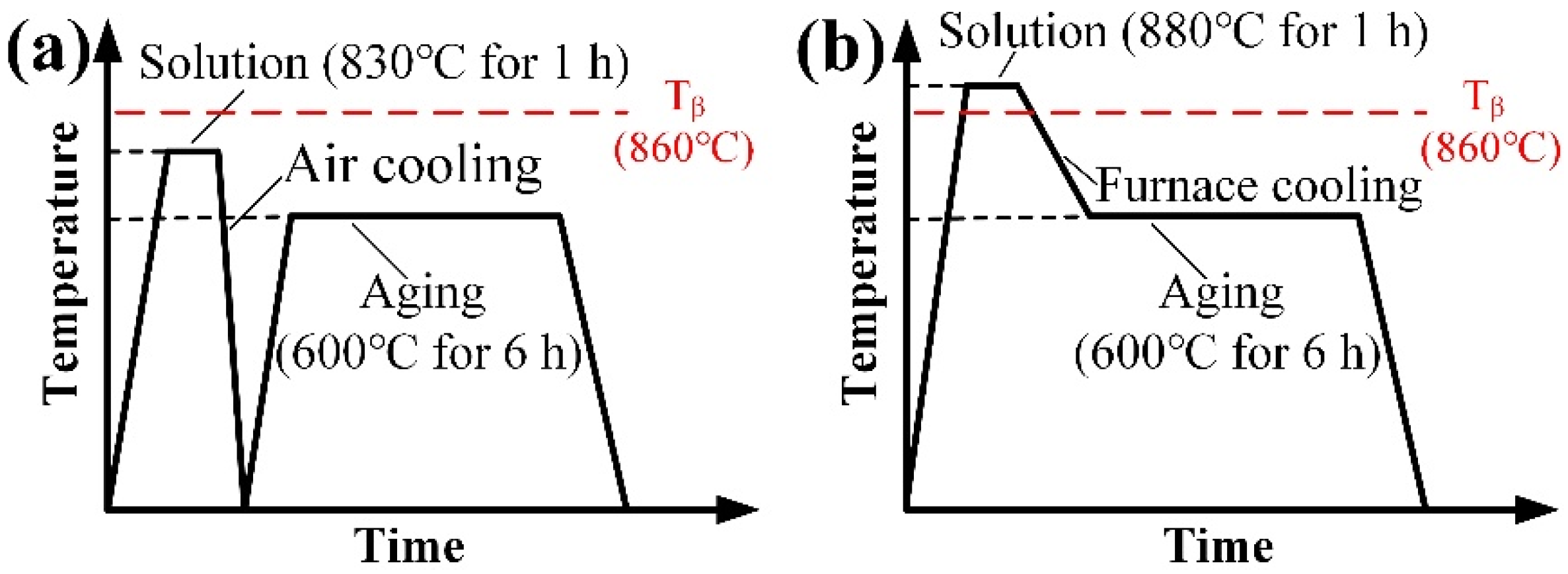
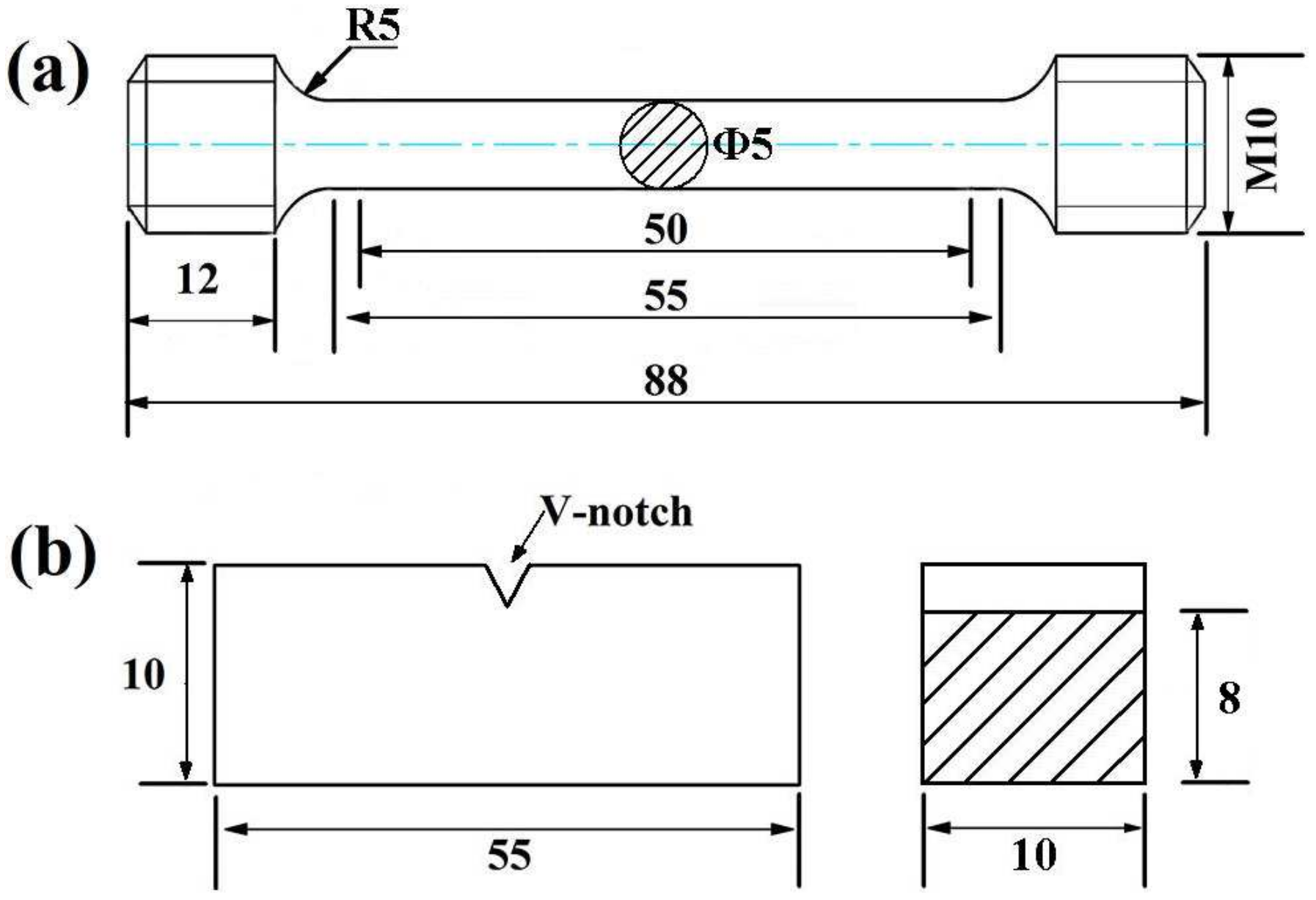
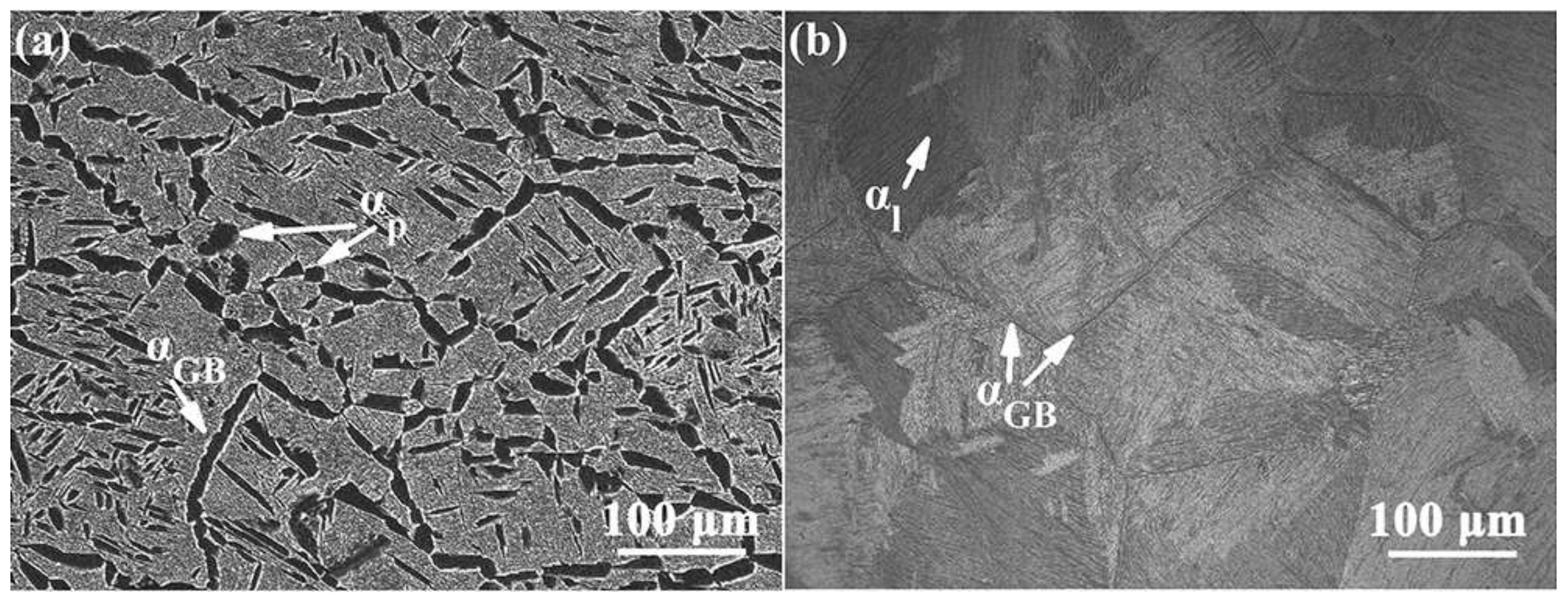
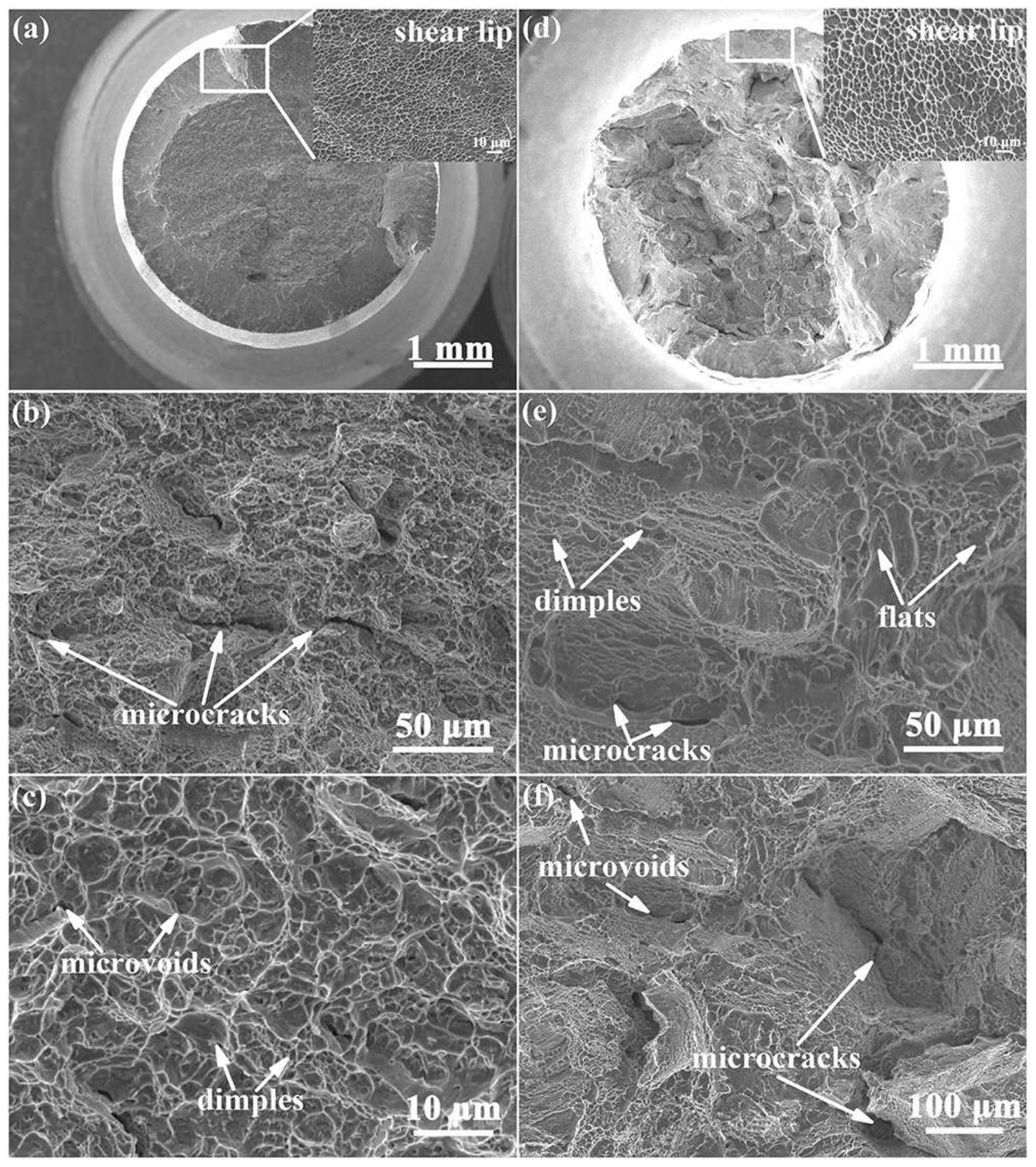

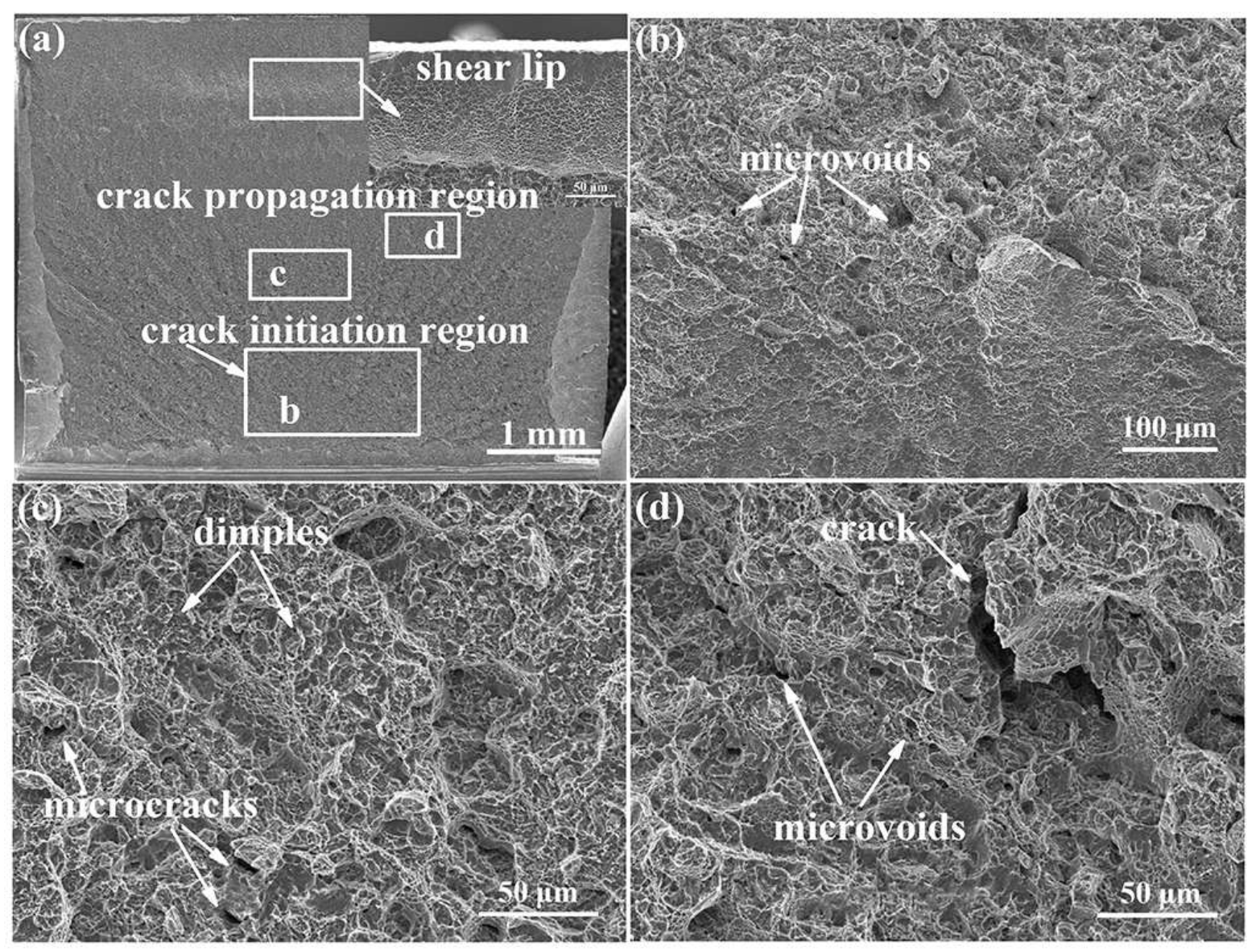

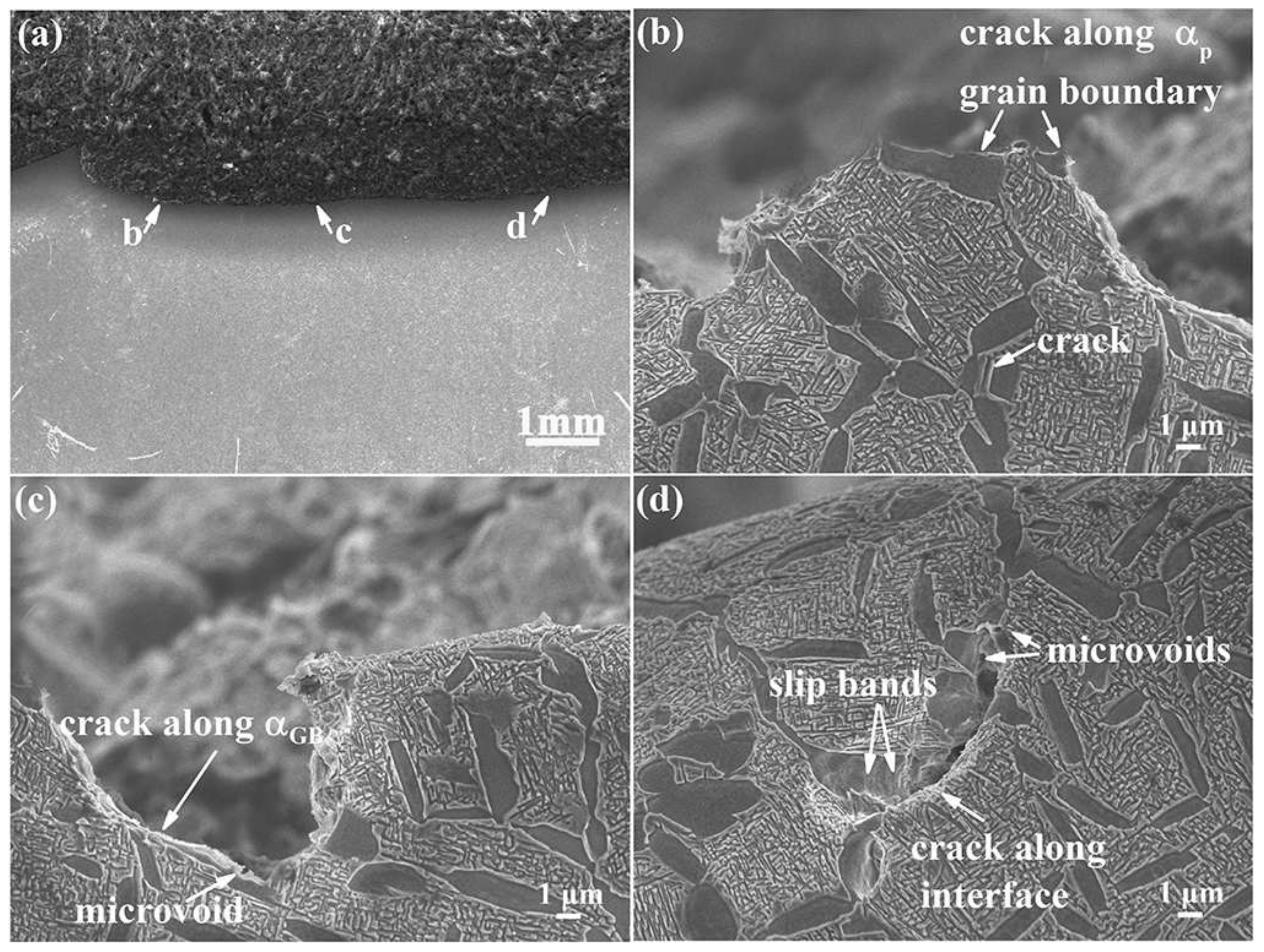
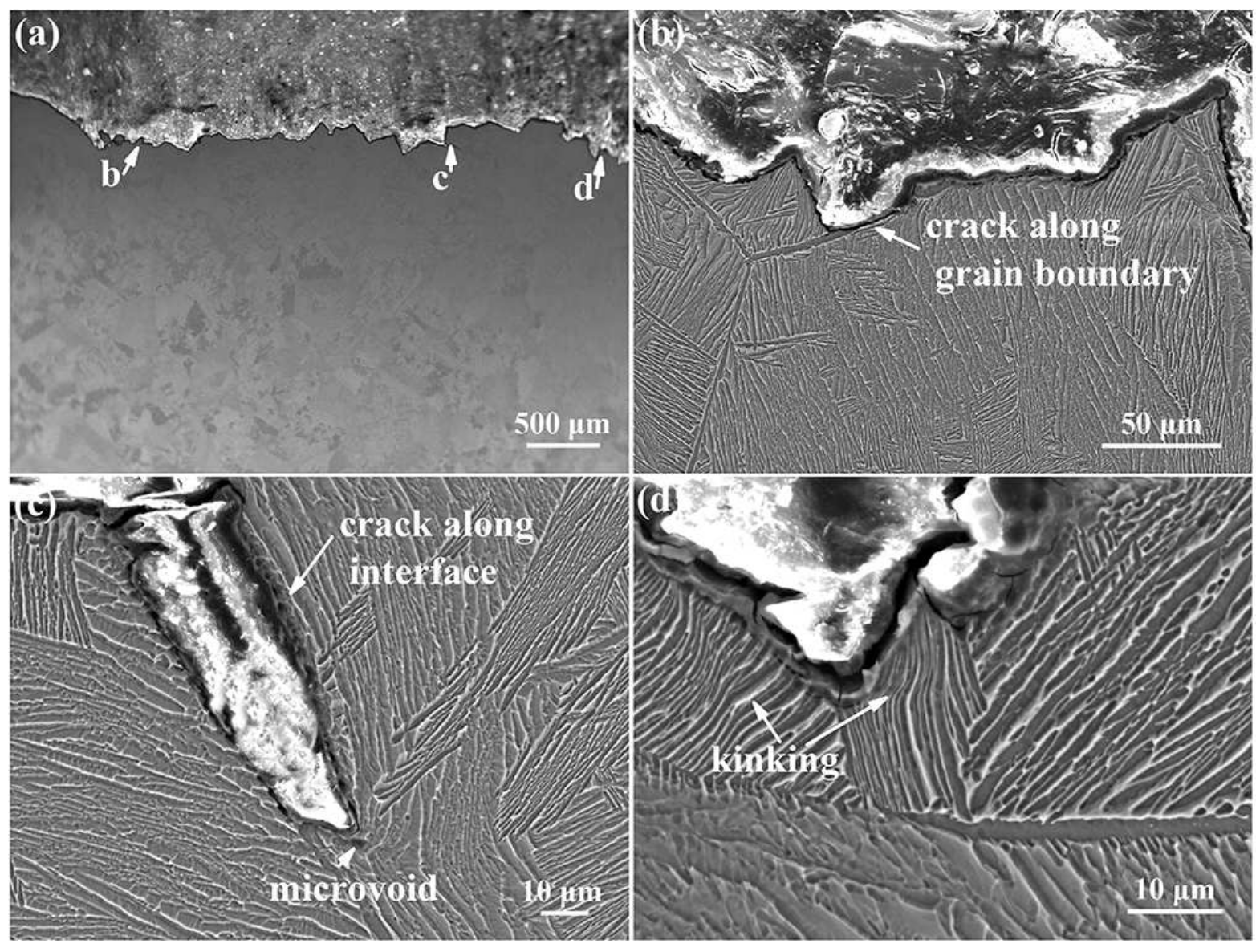
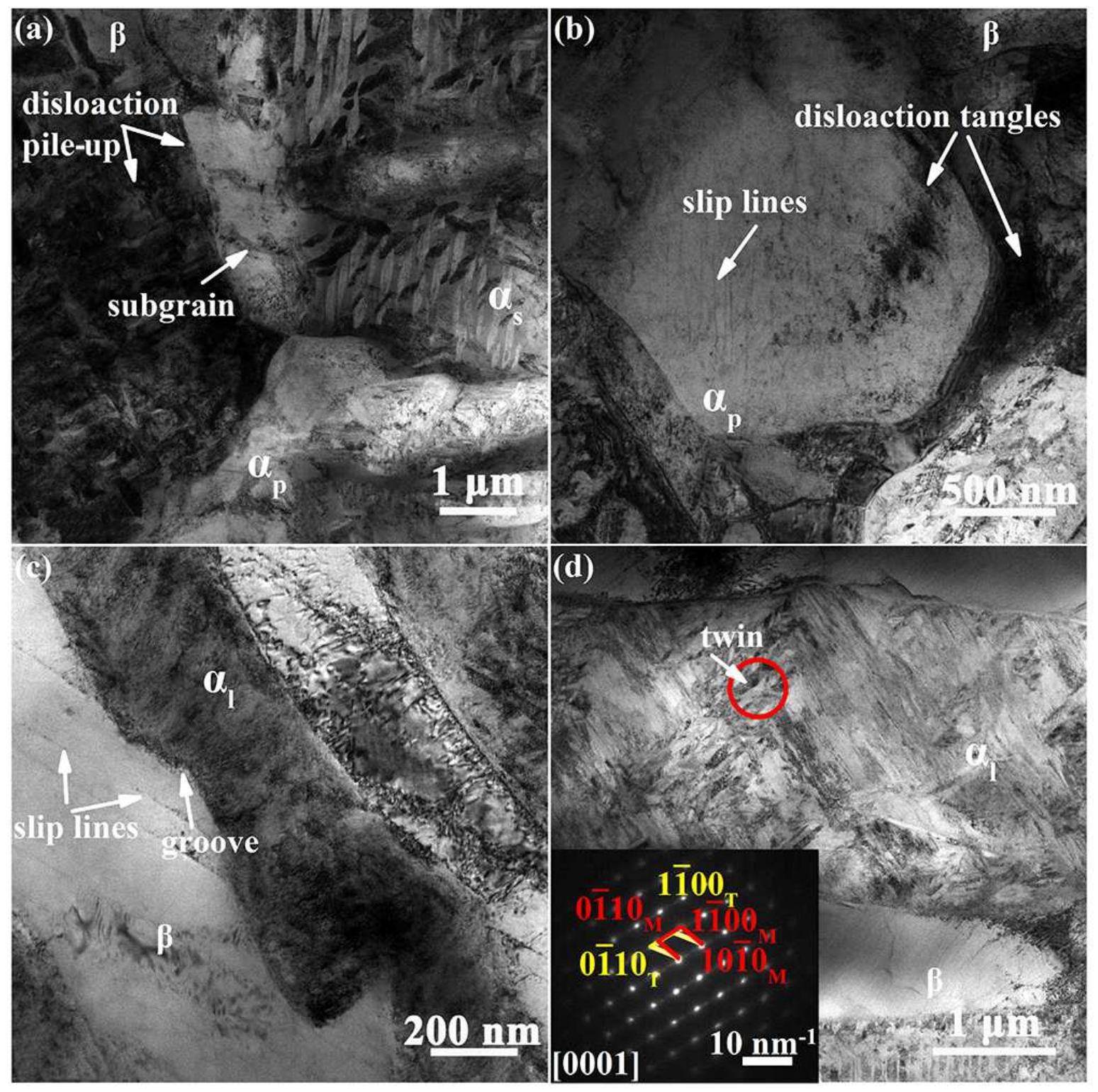
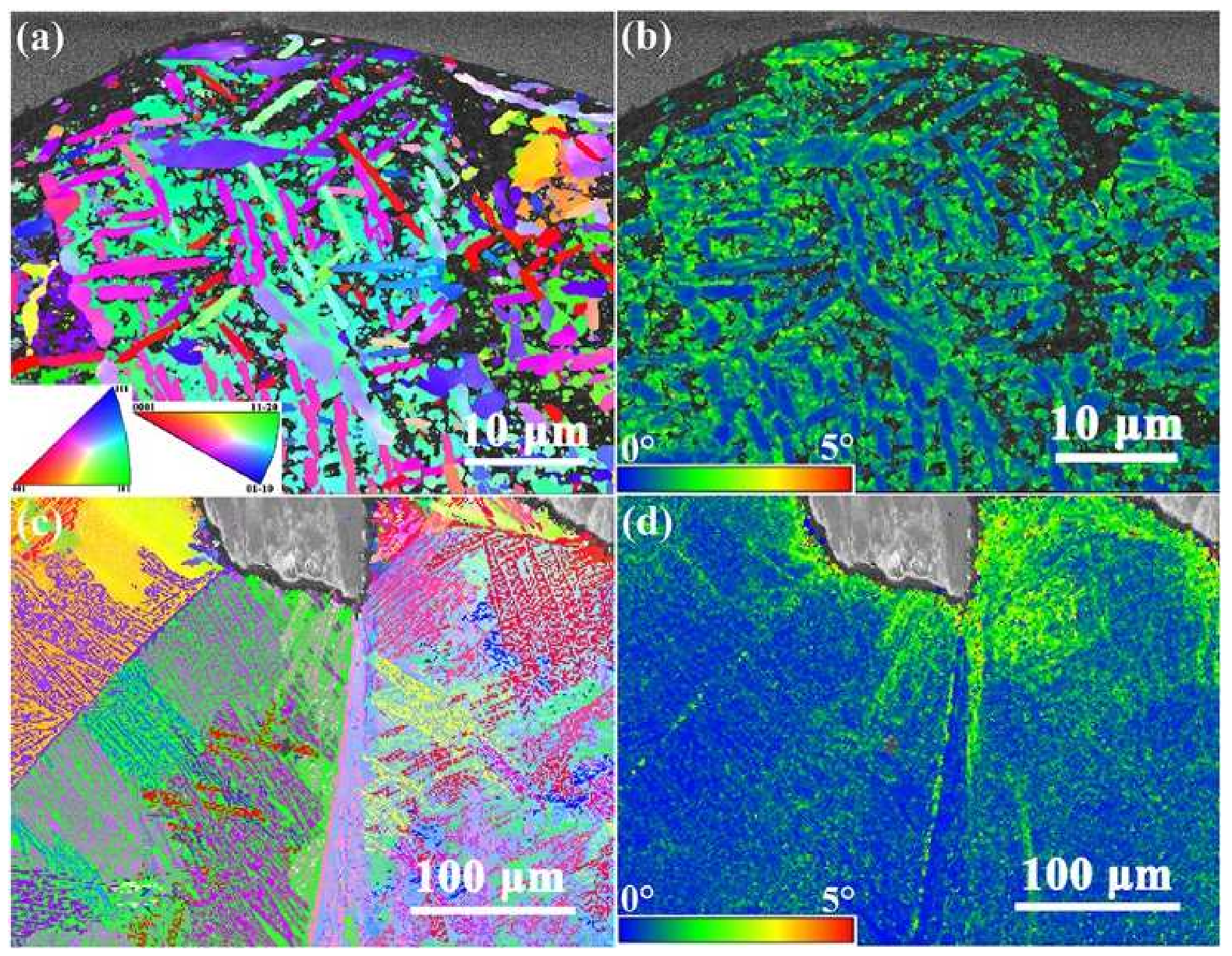
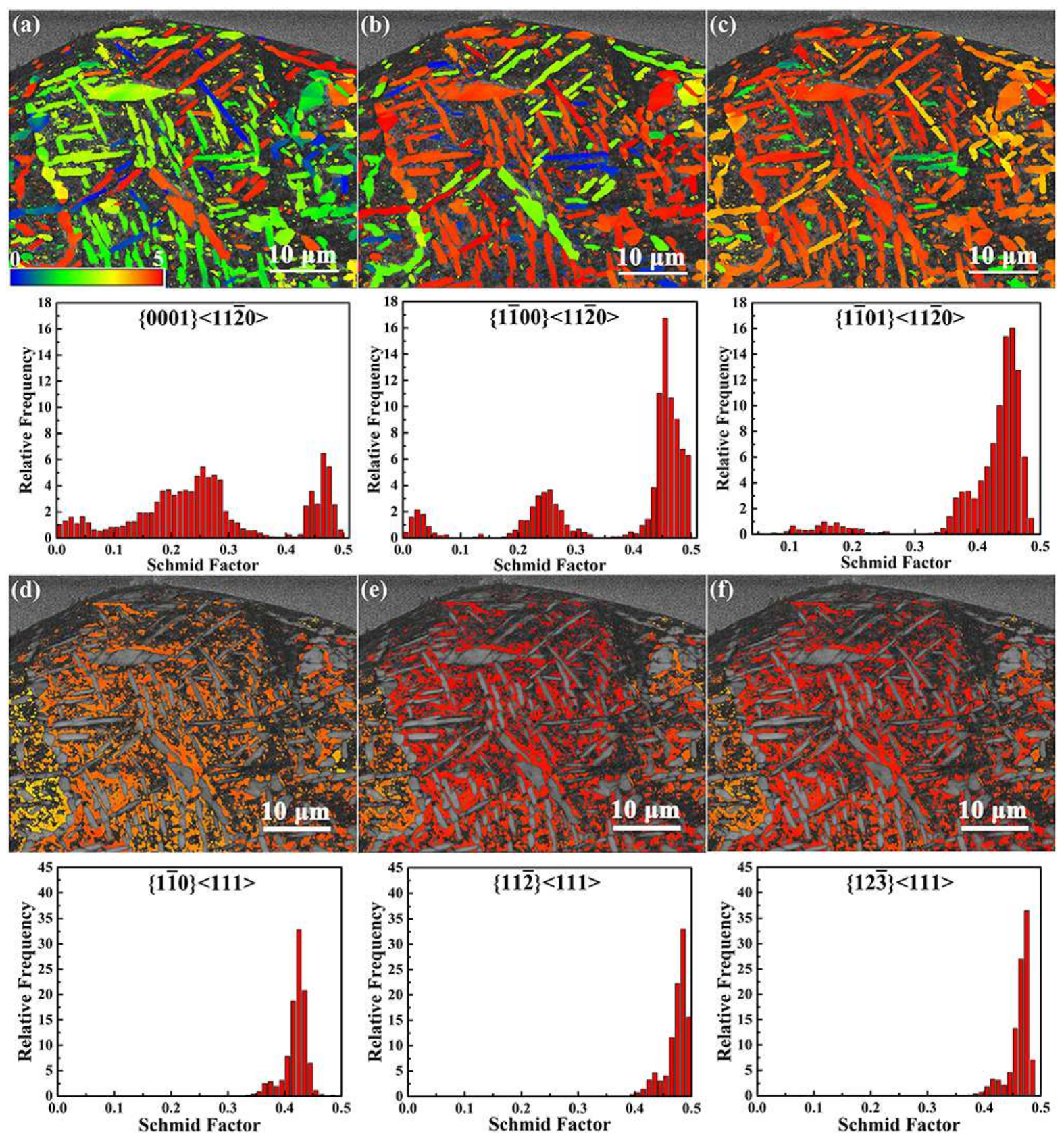

| Al | Cr | Zr | Mo | W | Fe | O | Ti |
|---|---|---|---|---|---|---|---|
| 4.10 | 5.33 | 3.99 | 2.63 | 2.09 | 0.83 | 0.08 | Bal. |
| Microstructure | UTS/Mpa | YS/Mpa | Elongation/% | Area Reduction/% |
|---|---|---|---|---|
| BM | 1292 | 1262 | 10 | 26 |
| LM | 1125 | 1093 | 13.5 | 22 |
Publisher’s Note: MDPI stays neutral with regard to jurisdictional claims in published maps and institutional affiliations. |
© 2022 by the authors. Licensee MDPI, Basel, Switzerland. This article is an open access article distributed under the terms and conditions of the Creative Commons Attribution (CC BY) license (https://creativecommons.org/licenses/by/4.0/).
Share and Cite
Wang, J.; Zhao, Y.; Zhao, Q.; Lei, C.; Zhou, W.; Zeng, W. Comparison on Impact Toughness of High-Strength Metastable β Titanium Alloy with Bimodal and Lamellar Microstructures. Metals 2022, 12, 271. https://doi.org/10.3390/met12020271
Wang J, Zhao Y, Zhao Q, Lei C, Zhou W, Zeng W. Comparison on Impact Toughness of High-Strength Metastable β Titanium Alloy with Bimodal and Lamellar Microstructures. Metals. 2022; 12(2):271. https://doi.org/10.3390/met12020271
Chicago/Turabian StyleWang, Jing, Yongqing Zhao, Qinyang Zhao, Chao Lei, Wei Zhou, and Weidong Zeng. 2022. "Comparison on Impact Toughness of High-Strength Metastable β Titanium Alloy with Bimodal and Lamellar Microstructures" Metals 12, no. 2: 271. https://doi.org/10.3390/met12020271






